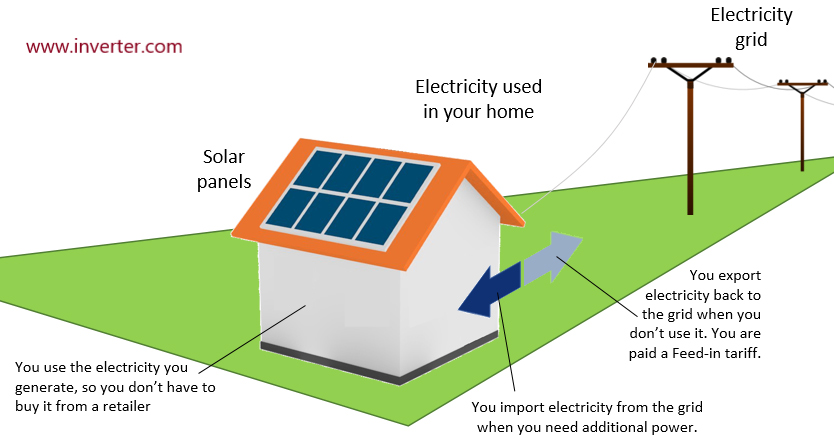Solar feed in tariff is how much will you be paid for the electricity generated from your solar photovoltaic system and send back to the power grid. Of course, the electric utility in your location which receives the power, will be on charge to pay you.
Actually solar feed in tariff value differs from one country to another, moreover, it differs from one state to another. In United States, every state has its own guidelines, and every retailer has a certain tariff. So, if you decide to install photovoltaic solar system in your facility, you will be needing to check different retailers in your location for the best price.
Generally, in the past where there were few persons installed solar photovoltaic system, the solar feed in tariff was high like In Australia, but these rates are No longer exist for new solar photovoltaic installer.
In the United States, each state government will define and manage the solar feed in tariff, because they are responsible of energy policy. But actually, they define the minimum tariff level, and let the maximum level to the market to decide. Moreover, some states pay for solar feed in tariff, but others consider as some kind of voluntary.

It’s very important to understand that solar feed in tariff policy value varies over time based on the different governments rules. And that tariff will have a great effect on solar photovoltaic system owner’s outcome based on their solar system power size.
Solar photovoltaic installation systems companies always do a site visit as preliminary step in installing photovoltaic system, and in this visit, they provide detailed information about our solar products electricity consumption, how much expected energy will be fed back to grid "remainder amount", how much money we will profit per year based on our electrical utility solar feed in tariff and what will be the return on investment & payback period. That is called economic feasibility study that assist in taking decision whether we should proceed installing the solar panel system or it may be with less profits, and we need to go to another project with high profits.
And as the solar feed in tariff varies from one retailer to another, and varies from time to another, we should be fully hundred percentage understand and get updated recommendations for solar installation companies about solar feed in tariff policy in our location at the time we are ready and before considering solar photovoltaic system installation.
At the end, solar feed in tariff provides great advantages for both customers and electric utilities. For customers, it constitutes as perfect way to get reasonable profits from their solar photovoltaic system project which they paid much money for it originally. For electric utilities, it avoids them paying much money in installing large electricity generation plants, and reduce electrical losses in distribution networks. And generally, it assists renewable energy industry to grow, and reduce pollution.
